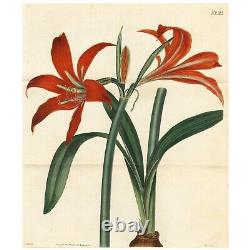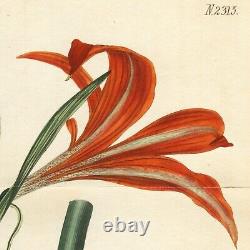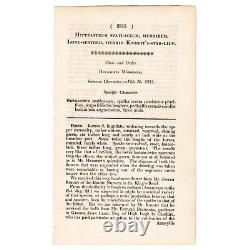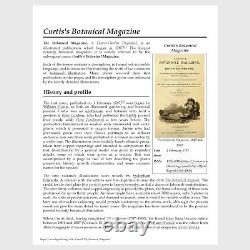
- Magazine First Edition
- Features
- 1st Edition (946)
- 1st Edition, Graded (4)
- 1st Edition, Tmnt (4)
- Auto Racing (8)
- Cards (3)
- Collector's Edition (29)
- Complete Edition (3)
- Dust Jacket (4)
- First Edition (15)
- First Printing (6)
- Illustrated (37)
- Limited Edition (10)
- Lot (9)
- Nude (3)
- Original (4)
- Original Edition (4)
- Promo (2)
- Special Edition (8)
- Vintage (65)
- Vintage, 1st Edition (3)
- Other (2724)
- Genre
- Action & Adventure (25)
- Art & Photography (106)
- Celebrity (26)
- Comics (24)
- Fashion (45)
- Games (13)
- Gay & Lesbian (15)
- Gonzo (12)
- History (88)
- Horror & Monster (42)
- Lifestyle (12)
- Manga & Anime (14)
- Men (57)
- Movies & Tv (13)
- Music (32)
- News (24)
- Science Fiction (13)
- Sports (36)
- Video Games (58)
- Women (11)
- Other (3225)
- Language
- Publisher
- American Media Inc (40)
- Antiquity (27)
- Condé Nast (71)
- Fangoria (6)
- George Newnes (65)
- George Newnes, Ltd (9)
- George R. Graham (6)
- Harper & Brothers (12)
- High Times (6)
- Hmh (10)
- Hmh Publishing (17)
- Marvel Comics (8)
- Nintendo (32)
- Nintendo Of America (19)
- Nintendo Power (11)
- Playboy (35)
- Refill Magazine (7)
- Shueisha (15)
- Time (17)
- Time, Inc. (8)
- Other (3470)
- Topic
- Art (69)
- Art & Photography (17)
- Automobile (12)
- Books (12)
- Comic Books (27)
- Electronics (13)
- Fashion (61)
- Historical (30)
- History (23)
- Horror (23)
- Literature (19)
- Manga (19)
- Men's Interest (36)
- Modelling (42)
- Music (26)
- News (16)
- Photography (37)
- Politics (38)
- Science Fiction (12)
- Video Game (25)
- Other (3334)
- Year Printed
Rare 1822 Curtis Botanical Double Folio Engraving No. 2315 HIPPEASTRUM SPATHECUM









Rare 1822 Hand-Colored Copperplate Engraving from. The Botanical Magazine or Flower-Garden Displayed'. Or LONG-SPATHED, HYBRID KNIGHT'S-STAR-LILY.
From early volumes of "The Botanical Magazine; or Flower-Garden Displayed" comes this original, Double, fold-out folio copperplate engraving, a rare & sought-after large-format plate from the scarce early volumes. This listing is for the one print from the above work: No. I'm listing a superb collection of these very scarce folio, fold-out, largest hand-colored engravings from this most important publication documenting the discovery of these flowers.
The Double-sized fold-out plates were reserved for the showiest, most dramatic, largest flowers. They were very rare in the series, & yet much more rare in the market, as they can often make the most impressive framed wall-art in terms of scale & image & are sought-after if & when one can be found.
This plate is one of the classics of the Curtis volumes. This one is likely a First Edition print, which are generally very rare.
Appears to be on the original wove paper, which came to be used in the early years of the 1800's. After the death of William Curtis, the magazine was published by his brother, Thomas Curtis. Later, Samuel Curtis (a son-in-law of William Curtis) became proprietor from 1801 to 1845. The prints in the first volumes were copper plates colored by hand. Some of the later prints were lithographs.Some of the distinguished artists were Sydenham Edwards, John Curtis, William Jackson Hooker, W. Fitch, William Graves and Matilda Smith. These prints have a universal beauty and are a lasting documentary contribution to botanical studies.
The Artists: This one is signed for both the artist'S. Curtis', & engraver'Weddell sc. The drawing & coloring are quite stunning. It's a beautiful plate, full of the passion that the early flower painters, botanists & gardeners had for these amazing flowers, many of which were discovered in the pristine reaches of the ever-expanding British Empire & by intrepid explorers of the time.These gorgeously drawn, engraved & water-colored original prints were presented on their page with consistently balanced, beautiful compositions. Every part of these prints was made by hand: Hand drawn & engraved on Copper which was hand-mined, smelted & rolled, printed onto handmade cotton rag paper, inked & colored with hand-ground pigments individually by hand, & they were usually hand sewn into handmade leather-bound books. Condition: Appears to be in excellent, near pristine condition. The hand-coloring appears to remain sharp & brilliant as the day it was painted.
The folds in this one are as-issued & appear in all copies I've seen of this plate as it's a'fold-out' & much larger than the rest which were octavo-sized bookplates. These prints are very old & may have minor imperfections expected with age, such as some typical age-toning of the paper, oxidation of the old original watercolors, spots, text-offsetting, artifacts from having been bound into a book, etc. Please examine the photos & details carefully. Text Page(s): This one comes with its original text page.
Hippeastrum Spethecum is also called Hippeastrum puniceum subsp. Hippeastrum puniceum is a bulbous perennial native to tropical regions of South America, although it has become naturalized elsewhere. Common names include Barbados lily, Easter lily, cacao lily, cocoa lily and amaryllis lily, although it is neither a lily nor a species of Amaryllis. Hippeastrum is a genus in the family Amaryllidaceae.
Size: 9 x 11-1/2 inches approximately. If you'd like to combine & need more time to choose, please send a message & we'll do our best to oblige.

